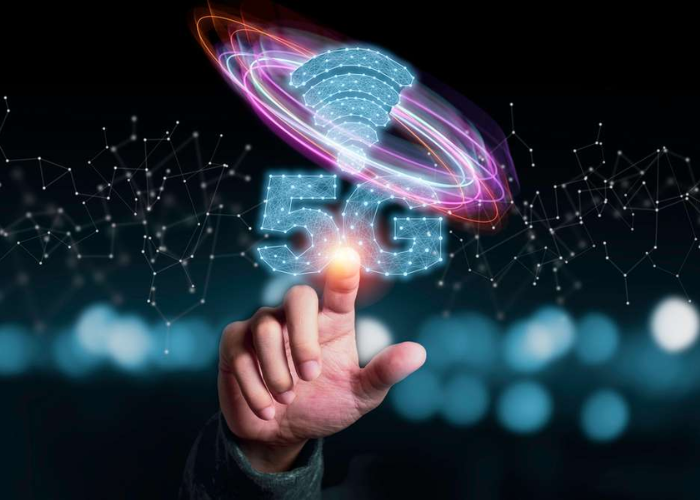In today’s hyper-connected world, where the Internet is an integral part of our daily lives, the demand for faster, more reliable, and ubiquitous connectivity continues to grow. We’ve come a long way since the early days of dial-up internet, and with the advent of 5G technology, we have reached a level of connectivity that was once considered unimaginable. However, as technology evolves at an exponential pace, the quest for even better connectivity never ceases. Enter “Beyond 5G,” a term that signifies the future of connectivity and the Internet of Things (IoT). In this article, we will explore what Beyond 5G entails, its potential impact, and how it is poised to revolutionize various industries and our daily lives.
The Evolution of Connectivity: From 1G to 5G
Before delving into the realm of Beyond 5G, let’s take a brief journey through the evolution of wireless connectivity. The term “G” stands for “generation” and represents the different stages of mobile telecommunications technology.
The Birth of Mobile Communication
The first generation, or 1G, emerged in the 1980s, bringing us the earliest form of mobile communication. These networks were analog and offered voice communication only, with no data capabilities.
The Era of Digital Communication
With 2G, which arrived in the early 1990s, digital communication became a reality. This allowed for text messaging, improved call quality, and limited data capabilities.
The Dawn of Mobile Internet
The introduction of 3G in the early 2000s brought us mobile internet access, albeit at relatively slow speeds compared to today’s standards. This marked a significant shift toward data-driven communication and paved the way for mobile browsing and basic video streaming.
The Birth of High-Speed Mobile Data
The transition to 4G, starting around 2009, represented a major leap forward. It enabled high-speed mobile data, which revolutionized the way we use smartphones. 4G networks offered fast internet browsing, HD video streaming, and the rise of app-centric ecosystems.
The Current State of Connectivity
5G, which began rolling out in 2019, brought with it even greater advancements. With speeds up to 100 times faster than 4G, extremely low latency, and the ability to connect a massive number of devices simultaneously, 5G unlocked new possibilities. These included augmented and virtual reality applications, autonomous vehicles, and the further proliferation of IoT devices.
The Limitations of 5G
While 5G is a remarkable leap forward in wireless technology, it is not without its limitations. These limitations are what drive the need for Beyond 5G solutions.
Coverage Gaps
One of the primary challenges with 5G is coverage. 5G networks rely on a higher frequency spectrum, which means they have shorter range compared to previous generations. This necessitates a denser network infrastructure, leading to coverage gaps in rural areas and even within cities.
Network Congestion
As more devices and applications come online, 5G networks can become congested, leading to slower speeds during peak usage times. This is especially problematic in densely populated areas.
Energy Efficiency
The energy consumption of 5G infrastructure, including small cells and massive MIMO antennas, is a concern. In a world increasingly focused on sustainability, finding more energy-efficient solutions is crucial.
Spectrum Allocation
The allocation of radio spectrum for 5G can be a contentious issue, with various industries and governmental bodies vying for limited frequencies. This can lead to delays and conflicts in deployment.
Beyond 5G: The Next Frontier
Beyond 5G, often referred to as 6G, is not merely an incremental improvement but a transformative leap in wireless technology. It aims to address the limitations of 5G while opening up new possibilities that were previously unimaginable. Here are some key aspects of Beyond 5G:
Extreme Speeds and Low Latency
Beyond 5G is expected to provide even faster speeds than 5G, potentially reaching terabit-per-second data rates. Latency, the time it takes for data to travel from the sender to the receiver, will be reduced to mere microseconds. This will enable real-time applications that demand instantaneous response times, such as remote surgery and immersive augmented reality experiences.
Massive Device Connectivity
One of the defining features of Beyond 5G will be its ability to connect an unprecedented number of devices simultaneously. This is essential for the proliferation of the Internet of Things (IoT) and the deployment of smart cities and industrial automation. Estimates suggest that Beyond 5G networks could support up to a million devices per square kilometer.
Ubiquitous Coverage
To address the issue of coverage gaps, Beyond 5G will employ a combination of technologies, including high-altitude platforms (HAPs) and low Earth orbit (LEO) satellites. This will ensure that even remote and underserved areas have access to high-speed internet.
Energy Efficiency
Energy efficiency is a key focus of Beyond 5G development. This includes designing energy-efficient hardware and optimizing network management to reduce the carbon footprint of connectivity.
AI Integration
Artificial intelligence (AI) will play a central role in Beyond 5G networks. AI algorithms will optimize network performance, predict and prevent network outages, and enhance security. Additionally, AI will enable intelligent edge computing, allowing devices to process data locally, reducing the need for constant communication with centralized data centers.
Potential Impact of Beyond 5G
The advent of Beyond 5G technology is poised to have a profound impact on various industries and aspects of our daily lives. Here are some of the potential areas of impact:
Healthcare
In healthcare, Beyond 5G’s low latency and high-speed capabilities will enable remote surgery and telemedicine to reach new heights. Surgeons will be able to operate on patients in different parts of the world with near-zero latency, making life-saving procedures accessible to a broader population. IoT-enabled medical devices will provide real-time health monitoring, allowing for early intervention and better disease management.
Transportation
The transportation sector will see a revolution with Beyond 5G. Autonomous vehicles will become the norm, as they rely on ultra-low latency and reliable connectivity to navigate safely. Traffic management systems will be more efficient, reducing congestion and emissions. Additionally, transportation services such as ride-sharing and logistics will be optimized through real-time data analysis.
Education
Beyond 5G will transform education by enabling immersive virtual and augmented reality learning experiences. Students will be able to interact with digital content in real-time, regardless of their physical location. Remote and distance learning will become more engaging and effective, bridging educational gaps.
Manufacturing and Industry 4.0
The industrial sector will benefit greatly from Beyond 5G’s massive device connectivity and low latency. Industry 4.0 initiatives, which focus on automation and data-driven decision-making, will accelerate. Smart factories will be able to coordinate and optimize manufacturing processes in real-time, leading to increased productivity and cost savings.



